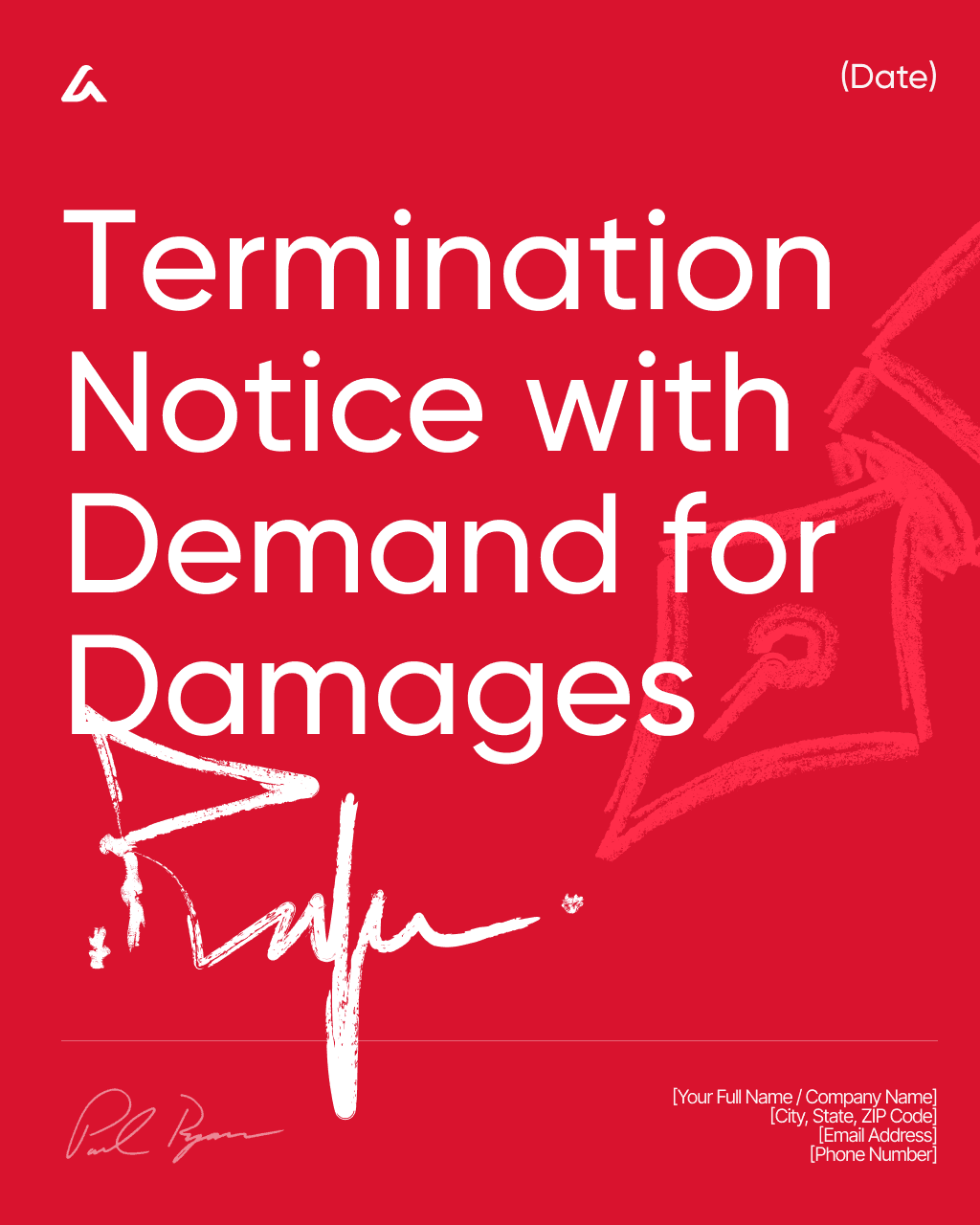Free template
Letter of Intent (LOI) Template – Texas
Define mutual expectations and guide negotiations effectively with this Texas Letter of Intent Template.
Downloaded 3826 times
Download template
Letter of Intent (LOI)
This Letter of Intent ("LOI") is made and entered into on [Date], by and between:
Party A: [Full Name / Company Name]
Address: [Address]
and
Party B: [Full Name / Company Name]
Address: [Address]
Collectively referred to as "the Parties."
Purpose
This LOI sets a practical roadmap for a potential collaboration in Texas, emphasizing clear expectations and efficient timelines. The Parties aim to preserve flexibility while confirming shared goals.
Decision criteria for proceeding will be agreed and revisited as diligence advances.
Operational Scope
Operations may include asset evaluation, land arrangements, or joint service delivery. Milestones, site access, and responsibilities will be coordinated during diligence.
Pilots may validate feasibility and budget alignment before scale-up.
Resource Commitments
Each Party anticipates allocating reasonable personnel, equipment, or funding for evaluations and planning. Specific quantities and scheduling will be finalized later.
Interim commitments are illustrative and adjustable by mutual written consent.
Confidentiality
Information exchanged will be kept confidential and used only for negotiation and diligence. Advisor disclosures require similar obligations.
Confidentiality survives termination or expiration.
Exclusivity
If agreed, a time-limited exclusivity period allows focused evaluation without third‑party interference. Scope, duration, and remedies for breach will be defined.
Exceptions should be identified to avoid conflicts.
Good Faith Negotiation
The Parties commit to candid updates and early issue escalation. Proposals should be realistic and constraints transparent.
If assumptions change materially, Parties will reassess scope together.
Governing Law
This LOI is governed by the laws of Texas. Amicable resolution methods may be explored before formal proceedings.
IN WITNESS WHEREOF, the Parties have executed this Letter of Intent on the date first written above.
Party A Signature
Name:
Title:
Party B Signature
Name:
Title:
Flash deal
Flash deal
Today
Today
No time to fill it up? Generate your custom agreement with AI Lawyer in seconds
What’s Included
Legal Research
Legal Research
Legal Research
Contract Drafting
Contract Drafting
Contract Drafting
Document Review
Document Review
Document Review
Risk Analytics
Risk Analytics
Risk Analytics
Citation Verification
Citation Verification
Citation Verification
Easy-to-understand jargon
Easy-to-understand jargon
Easy-to-understand jargon
Details
Learn more about
Letter of Intent (LOI) Template – Texas
Click below for detailed info on the template.
For quick answers, scroll below to see the FAQ.
Click below for detailed info on the template.
For quick answers, scroll below to see the FAQ.
Texas Letter of Intent (LOI) FAQ
What is a Letter of Intent?
A Letter of Intent (LOI) is a document that outlines the initial terms and intentions of parties who plan to enter into a formal agreement. It is often used as a pre-contract to show serious interest and confirm the key points before drafting a final, legally binding contract.
An LOI helps ensure both sides agree on the main expectations, goals, and basic terms upfront, reducing misunderstandings later. While it may include important details such as pricing, timelines, responsibilities, and next steps, most Letters of Intent are not legally binding, except for specific clauses like confidentiality or exclusivity if included.
When to use a Letter of Intent?
A Letter of Intent (LOI) is used when two parties want to outline the key terms of a potential agreement before creating a formal contract. It helps confirm interest, clarify expectations, and make sure both sides agree on the main points early in the process.
Individuals often use an LOI when applying for a job, internship, school, or partnership opportunity to show serious intent and professional interest. Businesses use a Letter of Intent during negotiations for major transactions, such as buying a business, forming a partnership, or entering into a commercial agreement. In these cases, an LOI sets out the main terms — such as price, timeline, responsibilities, and confidentiality — before preparing a detailed and legally binding contract.
What should be included in a Letter of Intent?
A Letter of Intent (LOI) allows parties to outline, clarify, and announce the key terms of a potential deal before creating a final, legally binding agreement. It sets expectations and ensures both sides understand the proposed transaction.
A well-structured Letter of Intent should include:
Contact information: Include the names, addresses, and contact details of both the sender and recipient.
Salutation: Use a professional greeting and the recipient’s full name (e.g., “Dear [Name]”).
Introduction: Clearly state the purpose of the letter, the opportunity or transaction being proposed, and the key parties involved.
Body content: Provide essential details such as the scope of the proposal, responsibilities of each party, timeline, pricing or financial terms, contingencies, and any due diligence information required.
Confidentiality or exclusivity (if applicable): Note any terms that limit sharing information or negotiating with others.
Closing statement: Explain the next steps to move forward (such as signing the LOI) and include an expiration or response deadline.
Signature: The sender should sign and date the LOI to confirm the intent.
Enclosures: List and attach any supporting documents, such as NDAs, business summaries, or product details.
While an LOI is often not fully legally binding, businesses should consider having it reviewed by a lawyer to ensure clarity, protect their interests, and avoid unintended legal obligations.
Is a Letter of Intent legally binding?
A Letter of Intent is usually not fully legally binding, but it can include certain binding provisions depending on how it is written. Most LOIs simply outline the parties’ intentions and key terms before drafting a final agreement. However, specific sections — such as confidentiality, exclusivity, non-disclosure, or governing law clauses — can be legally enforceable if clearly stated as binding. To avoid misunderstandings, the LOI should clearly specify which parts are binding and which are non-binding.
Can a Letter of Intent be used for business partnerships?
Yes. A Letter of Intent (LOI) is commonly used when forming a business partnership to outline the key terms both parties are considering before drafting a formal partnership agreement. It helps clarify expectations early, such as the proposed roles, ownership structure, capital contributions, responsibilities, and goals of the partnership, without immediately creating a binding commitment.
Using an LOI in this context allows both sides to confirm alignment, identify potential deal-breakers, and move into negotiations with a clear framework. To avoid confusion, the LOI should state which sections are non-binding and which, if any (such as confidentiality or exclusivity), are intended to be legally enforceable.
Similar templates
Other templates from
Letters and Notices Templates
Money back guarantee
Free trial
Cancel anytime
AI Lawyer protects
your rights and wallet
Money back guarantee
Free trial
Cancel anytime
AI Lawyer protects
your rights and wallet
Money back guarantee
Free trial
Cancel anytime
AI Lawyer protects
your rights and wallet
Money back guarantee
Free trial
Cancel anytime









































































































































